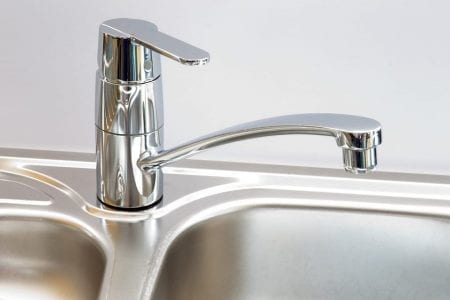 Limescale is a problem that every housewife is familiar with firsthand. Limescale is a problem of many surfaces in a house: sinks in a kitchen and a room, a toilet bowl, most small household appliances, in a word – all those surfaces that in one way or another interact with water and other liquids. If plaque is not removed immediately, the removal of limescale will take a long time and can be detrimental to surfaces coated with chrome. I will share the proven secrets of the fight against limescale in this article.
Limescale is a problem that every housewife is familiar with firsthand. Limescale is a problem of many surfaces in a house: sinks in a kitchen and a room, a toilet bowl, most small household appliances, in a word – all those surfaces that in one way or another interact with water and other liquids. If plaque is not removed immediately, the removal of limescale will take a long time and can be detrimental to surfaces coated with chrome. I will share the proven secrets of the fight against limescale in this article.
The reasons for the appearance of plaque
The logical conclusion is the first: the reason for the appearance of limescale on plumbing is an irregular cleaning. With timely cleaning, the plaque does not have time to form. However, we do not always have the opportunity to wipe plumbing and other surfaces daily, in such cases we have to deal with a raid on our own. Eliminating the causes of limescale will help to reduce the growth of deposits and reduce the frequency of general cleaning of the house.
Hard water is the main cause of plaque. Hard water contains calcium carbonate, which settles on the surface after evaporation of water. He then is a common problem of plaque. In this situation, installing softening filters on a tap with water will help.
Hot water. The use of excessively hot water causes rapid deposits in modern plumbing. Add cold water while using the sink.
Damage to plumbing. In the presence of cracks or other damage on the surface of the plumbing, limescale settles faster than usual. The solution to this problem is the careful use of plumbing and household appliances, regular inspection and timely repair or replacement of damaged parts.
Irregular flushing. One of the reasons for the appearance of limescale in the toilet is an irregular flush. Like other surfaces, the toilet requires cleaning and timely washing.
Limescale control
There are four main ways to deal with limescale. The choice of a specific method depends on the application and the degree of surface damage.
Vinegar. Removing limescale with vinegar is a simple, affordable and most common way to deal with the problem. To clean the kettle or coffee machine, pour vinegar with water in equal proportions into the appliance, start the appliance, and then repeat the procedure with clean water. To clean the tap, wrap it in a cloth that is moistened with plenty of vinegar, remove the cloth after half an hour. To remove plaque from the toilet, pour vinegar into the drain, use vinegar to apply vinegar to the surface under the rim of the toilet, after half an hour clean the surface with a brush, rinse thoroughly with water.
Soda. To remove limescale with soda, make a soda paste. To do this, you will need water and soda in a ratio of 1: 3. Rub paste into the problem place, leave for 1 hour. Then remove the residue with a dry cloth or rinse the surface with water.
Lemon juice. Using lemon juice to control limescale is similar to using vinegar. The difference is only in a reduced concentration of active substances, therefore, lemon juice will have to be added several times during the procedure to the treated surface.
Means for removing plaque. Special chemicals designed to combat limescale are available in a huge assortment in household chemical stores. However, be aware of the dangers and dangers of such products, use with caution in food contact equipment, and thoroughly rinse surfaces after applying solutions.
Prevention of limescale
Removing old plaque is almost impossible. To prevent this problem, adhere to the rules for the prevention of limescale.
Wet the bathroom and kitchen at least once a week. Regularly clean the coffee machine and kettle from fresh deposits. Clean the toilet with a brush after each use.
Correctly configure the toilet drain and faucets: water should not constantly flow over the surface of the plumbing.
Do not leave greasy food debris in the sink and toilet, dispose of them immediately.
Protect surfaces from mechanical shock with heavy or sharp objects.
Picture Credit: RonPorter



